HELL BENT AND ON A MISSION
That is how I would describe my state of mind when we returned from our Florida trip.
We have three out of three kids diagnosed with ADHD and ODD. This must be the reason our experience with our Florida trip was so over the top….right?! It’s gotta be why.
ADHD is Attention Deficit, Hyperactivity Disorder, and ODD is Oppositional Defiance Disorder.
So I had to understand this more, or I was surely going to lose my sanity or what ever was left of it. The kids went back to school after the Easter break, after our Florida trip. And that was when I was introduced to an OT Therapist at Turner Valley School.
We were talking and she casually mentioned that I should look into this guy out in Kelowna. His name is Dan Duncan. She said that he gives amazing presentations on ADHD, and she thought that it would be really beneficial for our family and for me to look into it. So I did. And one month later I was on a plane with my mom to Kelowna!
We were going to make it a girls’ trip…..one of learning, being together, and also just visiting a whole bunch of family that lives out in that area. If the presentation isn’t good, at least we got this time together.
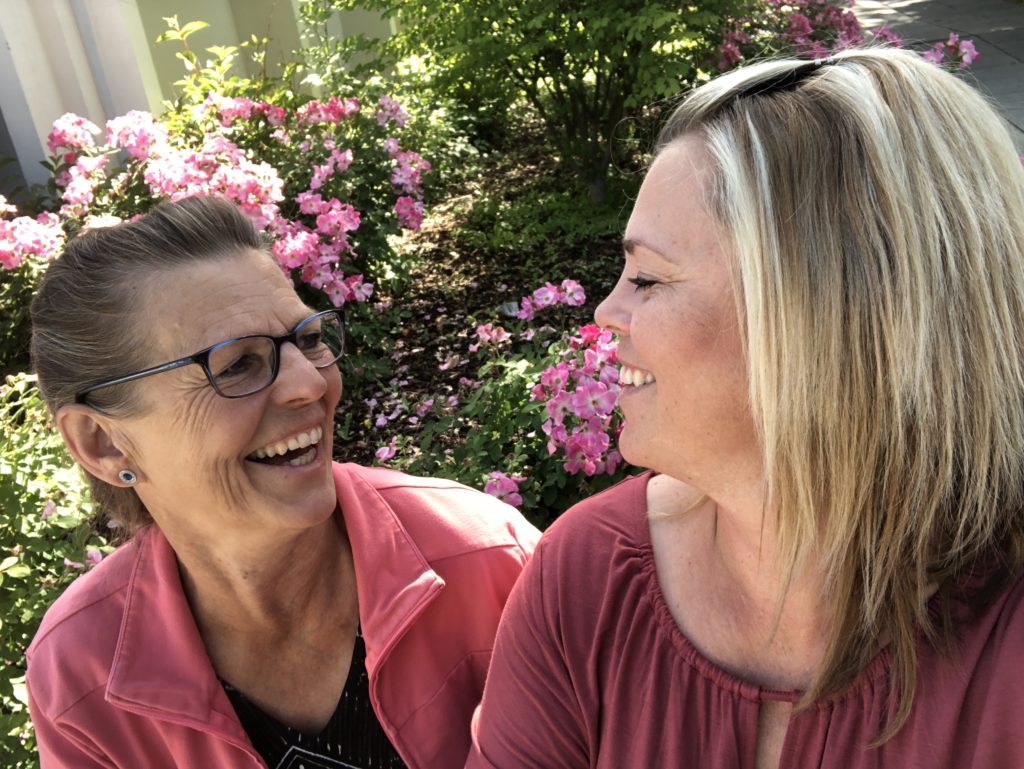
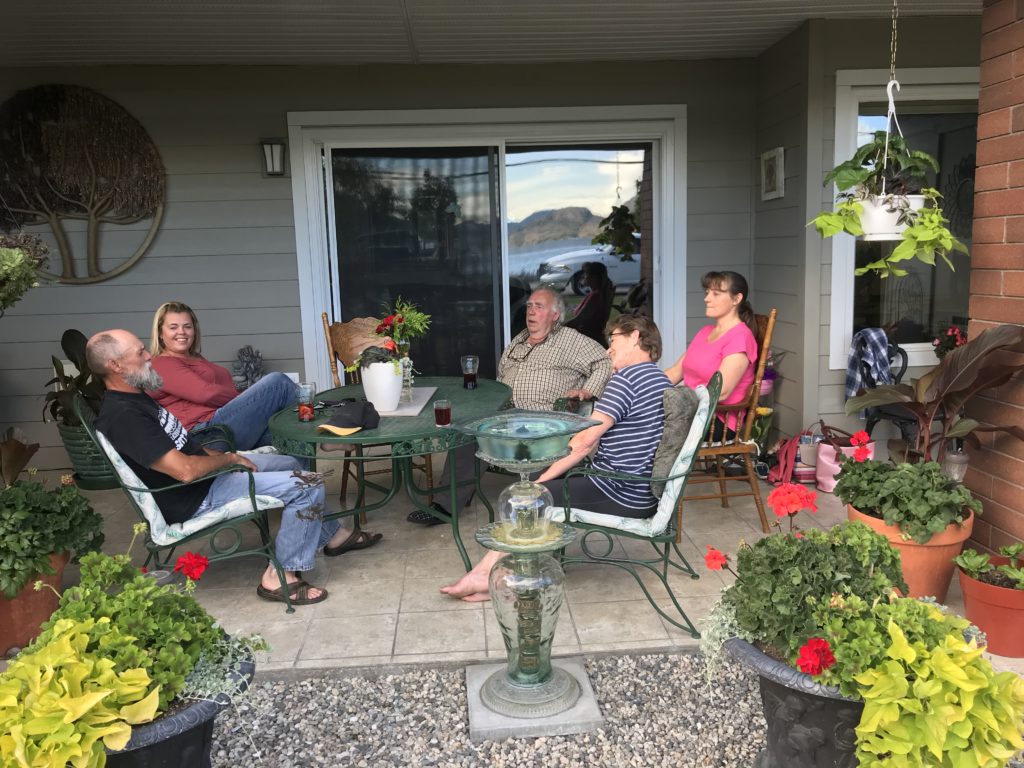
So we go to the presentation and the room that it was in was actually quite big. I thought that it might get half full. There really can’t be that many people that need this information. But wow. Was I wrong. It was packed!! And looking around at the faces, I knew that we were in good company because they all looked just as tired, stressed and curious as I did. Some were parents, some were grandparents and some were adults and teens with ADHD that wanted to understand themselves more.
What was so cool to see was there were many teachers in the audience as well because they wanted to understand their students better. And that made my heart so, so happy.
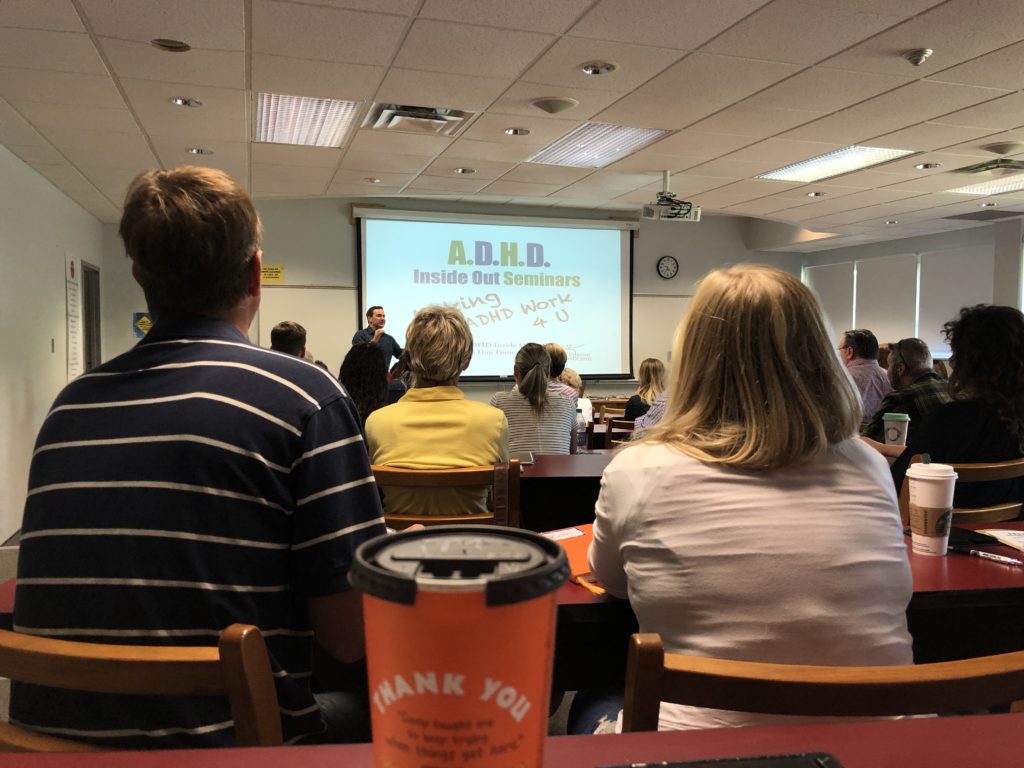
Dan Duncan was diagnosed as an adult. He’s also a father of someone with ADHD. He’s an ADHD coach consultant and academic strategist. See more about him HERE.
He works in this field every day. And he lives it himself. I immediately felt at ease that I was going to learn what I needed to that day.
Before I go into what Dan talked about, James and I really want our listeners to hear this. Saying the following phrases is harmful, not true and I hope to educate why:
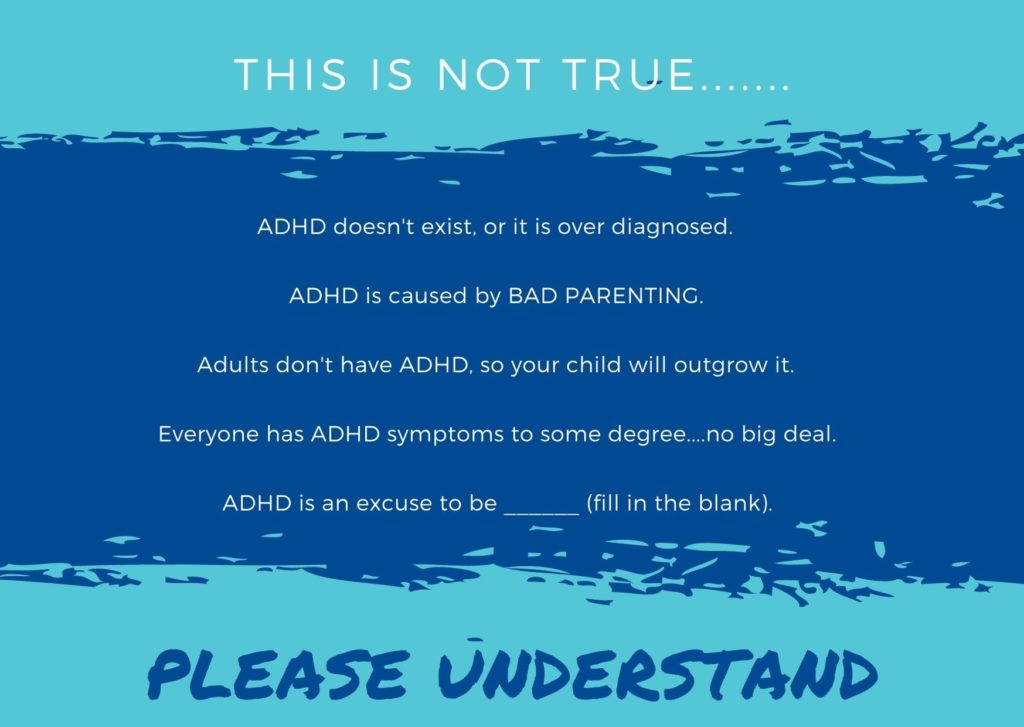
I quite literally knew NOTHING about ADHD….and I mean SQUAT….nodda.
I would like to outline what the criteria for an ADHD diagnosis is. So that if you suspect that you have someone in your family that might have it, or that you might have it and have been undiagnosed, hopefully this will help guide you into understanding if you need to look into it for yourself.
People with ADHD show a persistent pattern of INATTENTION and/or HYPERACTIVITY-IMPULSIVITY that interferes with functioning or development. 6 or more symptoms for children up to age 16 years, or 5 or more for adolescents age 17 years and older and adults; symptoms must be present for at least 6 months, and they are appropriate for developmental level:
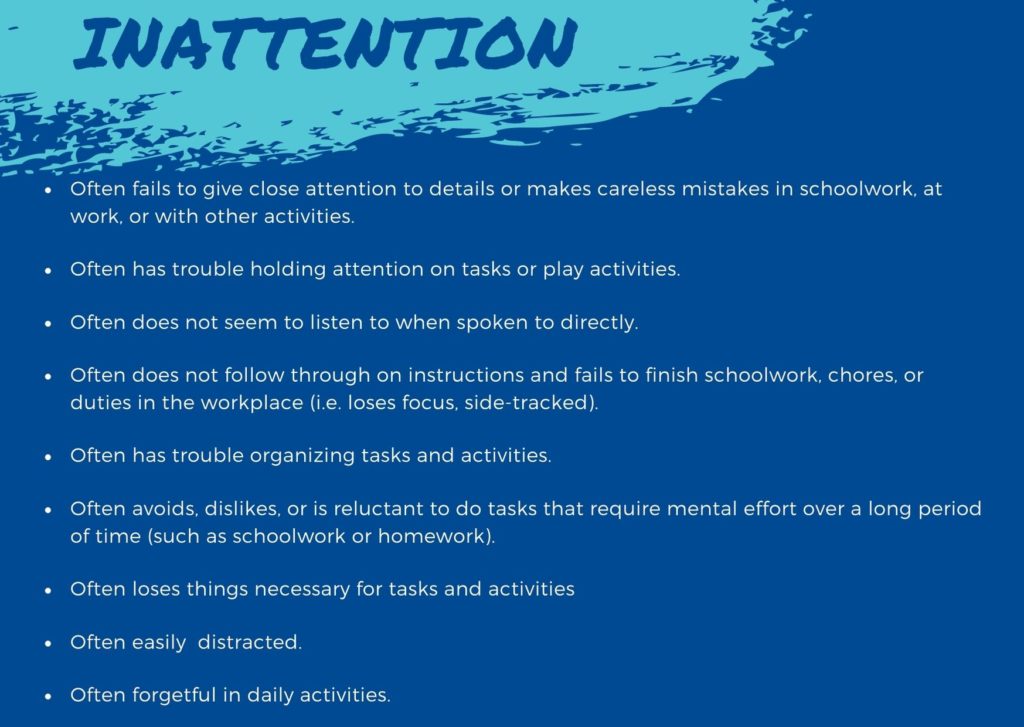
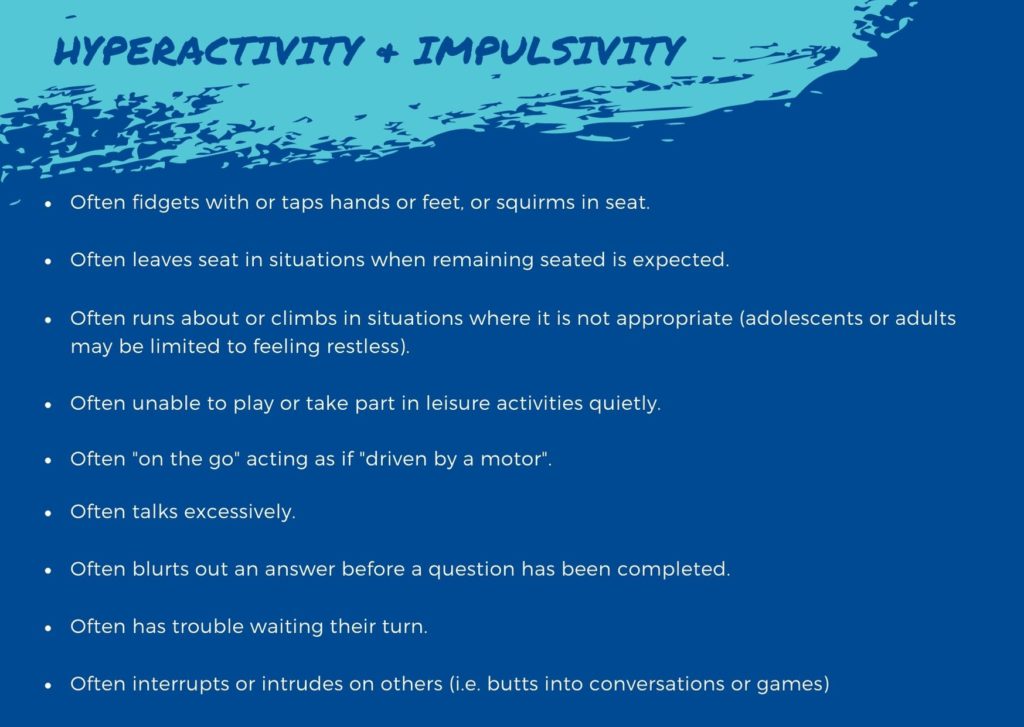
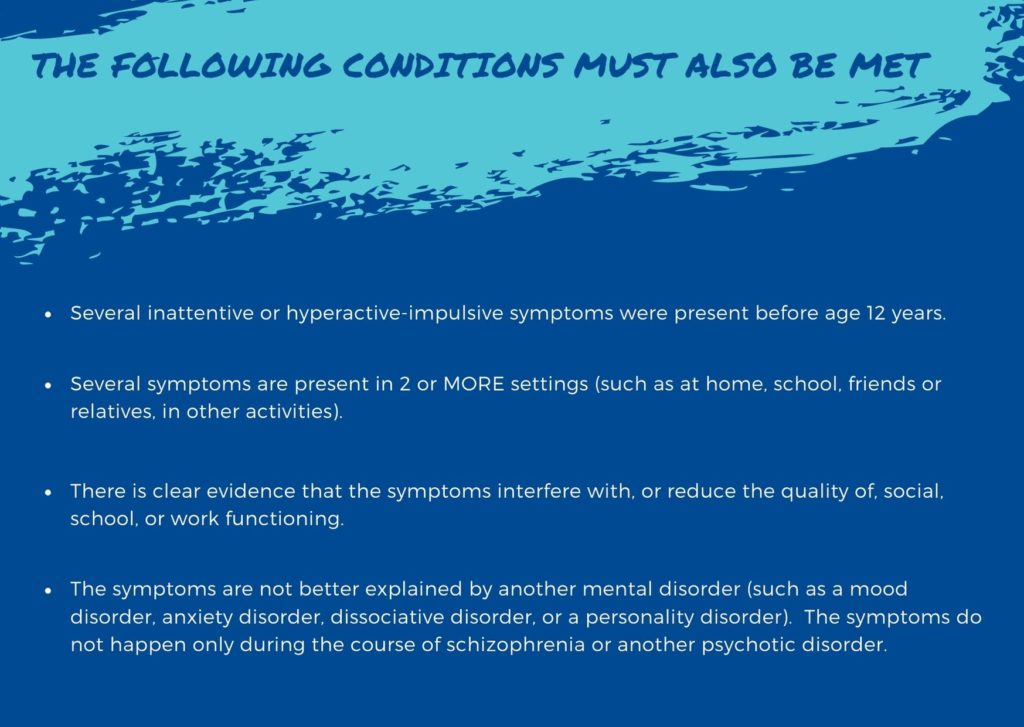
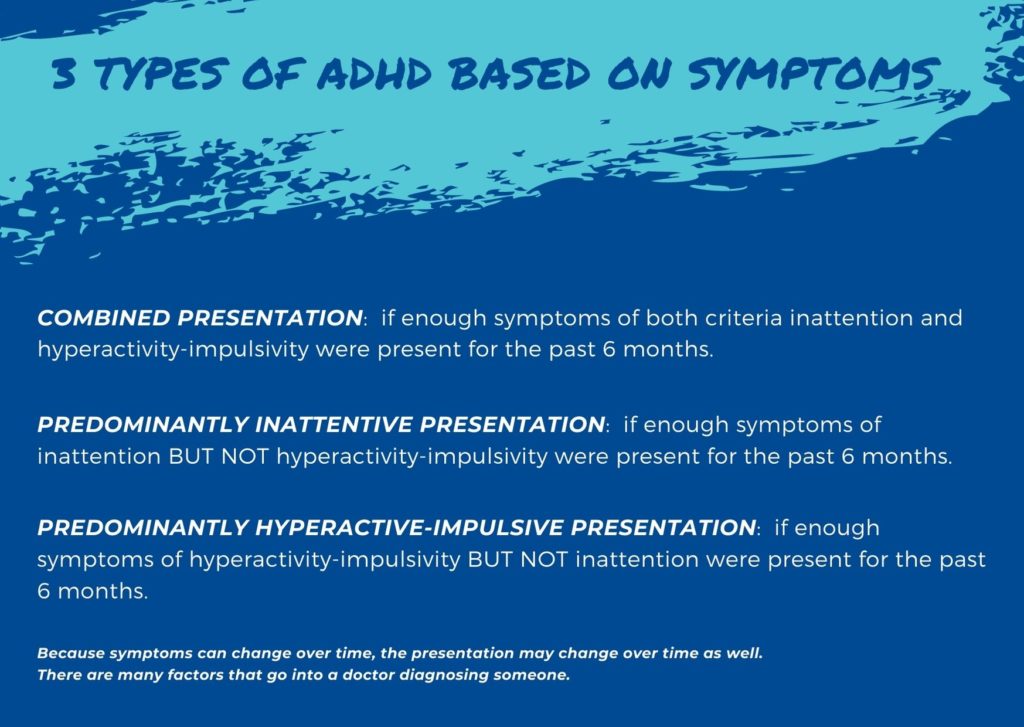
To be diagnosed, one has to check off a LOT of boxes.
Doctors don’t diagnose EVERYONE with ADHD. That is simply not the case. So please understand this is real. And it is something that needs the same respect as someone dealing with a physical health ailment, like heart issues.
This particular quote in the presentation struck me like a lightning bolt.
“ADHD individuals do not have a problem knowing WHAT to do, they have a problem doing what they KNOW. ADHD like a meat cleaver has separated those two mechanisms so that what is known does not carry forward to influence what is done…it should be called Intention Deficit.“
Dr. Russell A Barkley, PHD

Children and adults with ADHD tend to struggle with these 7 core executive dysfunctions:
WORKING MEMORY
TASK RELATED EXECUTIVE FUNCTION
RESPONSE INHIBITION
SELECTIVE ATTENTION
SPATIAL SPANNING
EMOTIONAL REGULATION
VERBAL WORKING MEMORY
When I first heard these terms, my mind turned to mush. But I soon learnt amazing strategies for each of these that have helped our children. The three that I would like to discuss today are Working Memory, Selective Attention and Spatial Spanning.
WORKING MEMORY
By far, the best explanation I have heard on this matter is how Dan describes it with the Sticky Note Memory analogy. So instead of retyping it here, please check out his blog below.
Sticky Note Memory – Dan Duncan
You would NOT believe how many times we have to ask our kids to do a task like put on their socks. There are too many distractions between where they are in the house to their bedroom and the sticky note has fallen off by the time they get there. Prior to learning they had ADHD, we would say…..”go get dressed, brush your teeth, brush your hair”. Now it is 1 step instructions……only 1 at a time. Does this take longer to get things done….absolutely. But knowing why it does has helped in the frustration levels in our home.
SELECTIVE ATTENTION
This was also a huge AHA moment for me. At one point in the presentation, my mouth actually hung open and I looked at my Mom and we both said the same word – which I’ll tell you in a bit.
Selective Attention is simply the act of focusing on a particular object for a period of time while simultaneously ignoring irrelevant information that is also occurring. This occurs on a daily basis and can be seen in basically any of your interactions.

In non-ADHD brains, it is much easier to change where you want your attention to go. For example, if you were at home and watching TV but know the dishes need to get done….is is EASY for you to switch attention to going to the kitchen to do the dishes.
This is NOT the case in ADHD brains. ADHD attention is CAPTURED, not CONTROLLED; therefore it is almost exclusively INTEREST based. Apparent “sustained focus” is actually “sustained captivation”.
It is more difficult for people with ADHD to become focused, to STAY focused, and to switch focus toward a LESS INTERESTING scenario (even if they consider the scenario more important).
For successful interaction with ADHD people, it is always a 3-step process: CAPTURE attention – Interact – RECAPTURE attention. 3 keys here are to reduce distractions, increase the interest and shorten the duration of the activities.
So back to why our mouths were dropped open……

As Dan was telling us all of this great information, he was sprinkling in personal stories of himself, his son and his family life. One particular story he told while discussing selective attention was when I came to the realization that my husband James most definitely, 1000% had signs of being ADHD. As the seminar continued and we learned more, it become even more clear.
SPATIAL SPANNING
Now this is where EVERYTHING started to make soooooo much sense to me and I hope I do this justice in my explanation. I will break this down into EMOTIONS and TIME MANAGEMENT.
First, EMOTIONS:
In a non-ADHD brain, past emotions tend to blend with current emotions (smoother overall). For example: yesterday’s good news helps to buffer today’s bad news, or Friday’s struggle is easier to tackle because fun is planned for the weekend.
In ADHD brains, emotions DO NOT span over time; current emotions are almost entirely reflective of current events (more volatile range, quicker transitions). For example, the frenzied rage from 10 minutes ago is replaced with hilarious laughter at a joke just told, or days of fun enjoyed with friends is forgotten if one of them teases.
Second, TIME MANAGEMENT:
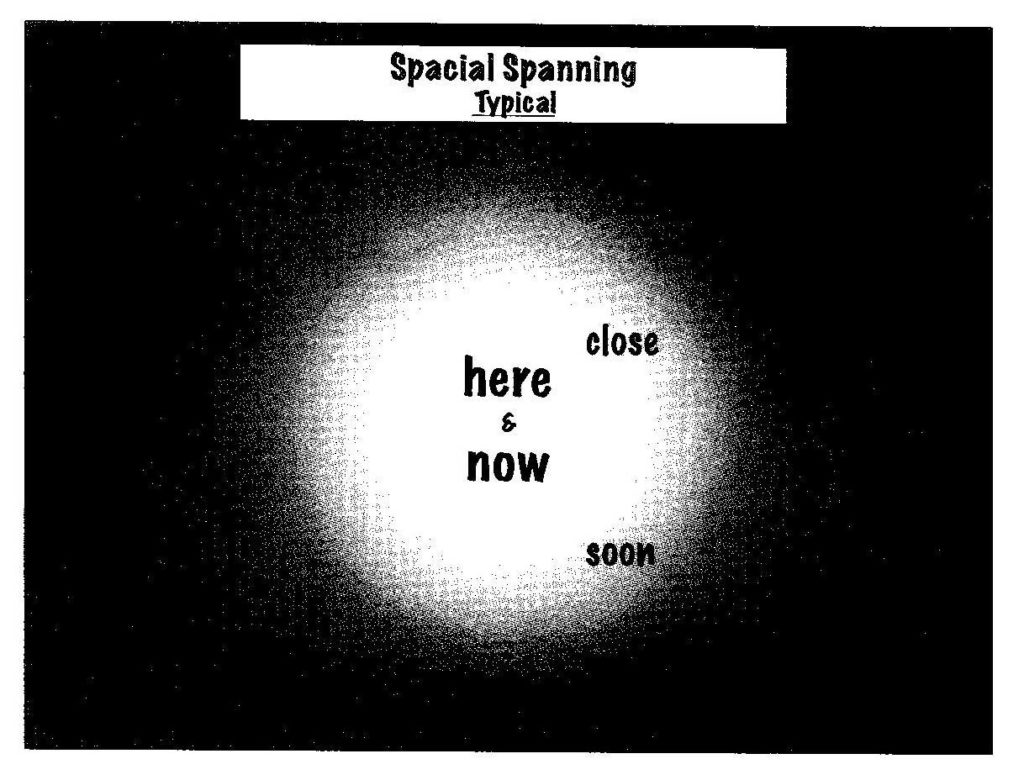
See above illustration – this is a neuro-typical brain (non ADHD):
Time and space feel like they transition smoothly.
Feel future events getting closer as time passes – the brain feels pressure of approaching events and rises to the occasion, providing motivation, focus, energy, recall, etc.
The brain feels the space between future events such as this morning’s tasks, and upcoming exam, a project that is due in 2 weeks, etc.
This is called GRADUATED PROXIMITY.
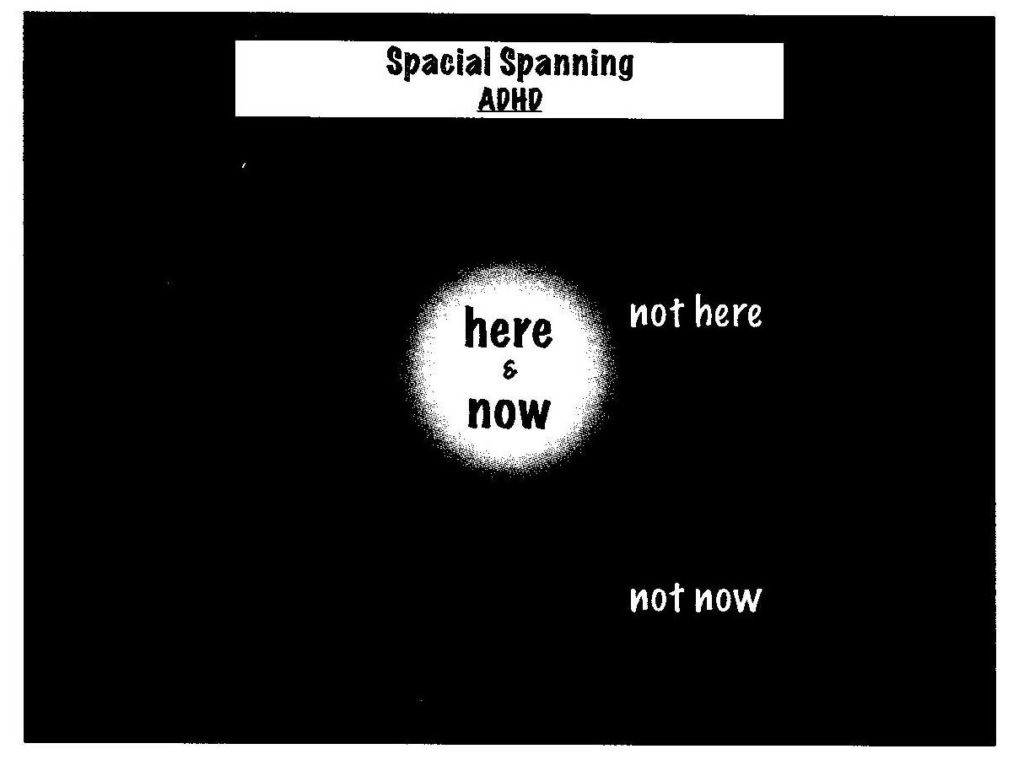
See above illustration – this is an ADHD brain:
Time and space are focused on the HERE and NOW only..
Everything that is not here and now feels the same.
Individuals can’t feel future events getting closer until they enter the “time circle”.
This makes procrastination & cramming a hallmark of ADHD.
Anxiety can go through the roof.
They feel the space between future events – overwhelm is a danger, when they feel the weight of one item in the future, they feel the weight of everything in the future.
This is called DICHOTOMOUS PROXIMITY.

To help a person with ADHD with their time management:
The less interesting a task is, the smaller the time circle (span).
The ability to start, maintain and complete a task is largely related to the ability to FEEL the end from the beginning (fits within the time circle).
Clarify task details and time estimate (give them a big picture).
Chunk large tasks with time estimates (view each chunk as a single task). For example, studying for 2 hours may be best accomplished as 20 minutes of study time followed by a 10 minute movement break and repeat.
When it comes to SCHEDULING: start with a DUE DATE of the whole assignment, work backwards and schedule “Do Dates” for each chunk with alarms (parking tasks in time allows as ADHD mind to focus on NOW, and wait for the next chunk to “show up” when planned.
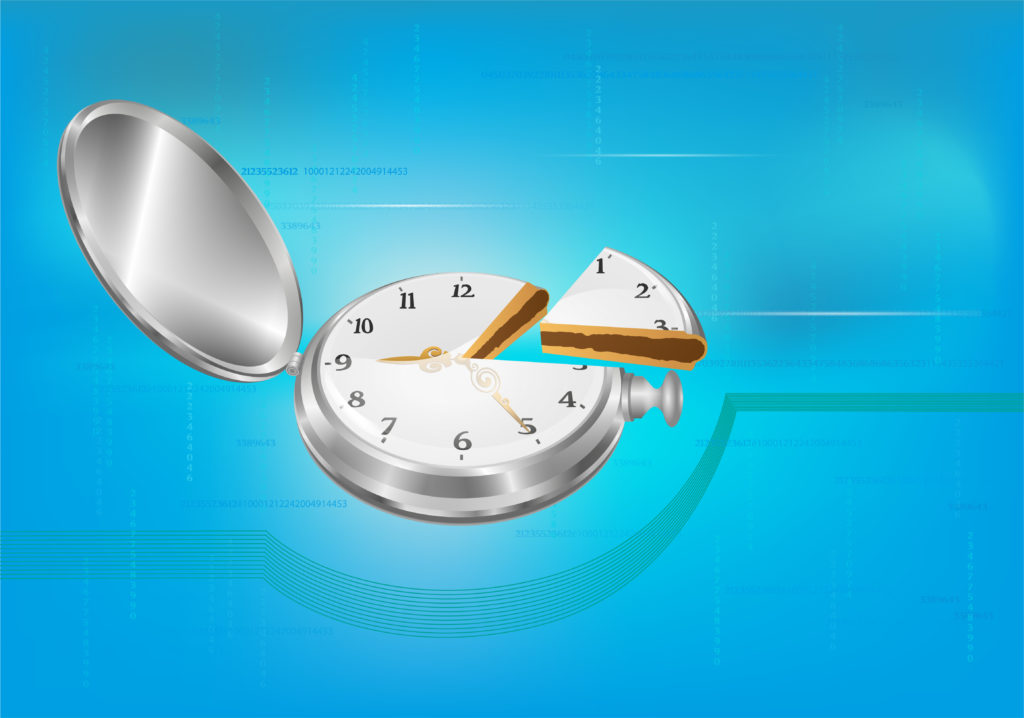
At one point during the presentation, Dan played a YouTube video for us…..and yeah……I UGLY cried. It is called “What I Want To Say To My Mom, Who Drugged Me”. That was the first time I heard from someone that described what it was like as a child to experience ADHD and that her Mom was there to help her understand herself better.
What I took away from this video is that kids know when they have something going on in their bodies and brains. They need their parents or caregivers to help them get the treatment they require so that they don’t feel less than, so they don’t turn to self-medicating or fall into deep depressions. It’s not about YOU as the parent, it’s about getting the child the help they need to have a better life.
I cried along with everyone else in that room. Check it out below…….and bring Kleenex.
I left that weekend understanding one thing very clearly…..
HAVING ADHD IS NOT A BAD THING.
It’s not something to be ashamed of. It’s not because we were bad parents. It’s a NEUROLOGICAL DISORDER. That’s right. ADHD can’t be seen with an MRI or a scan. But trust me….when you live with 4 people that have it, and maybe 2 dogs as well……you’d agree that it is real.
It’s my hope to help others understand that ADHD is actually a superpower….by helping your child, your partner or yourself understand that it’s what direction you choose to use this superpower (for good or for bad). I know many ADHD people that have done amazing things because of how their brain works…..including James. He can get done more things in a day than most – but usually hyper-focuses on those tasks he likes (such as laundry)! If he has to get something done that doesn’t interest him, well that is a different story.

One thing I highly recommend if you are a parent dealing with kids with ADHD, is join some of the support groups on Facebook. There are amazing people in these groups and they know what it’s like and the GET IT. One of those people is another Mom named Becky Kingsman.
She wrote the most AMAZING post about her 18 year old son Jake. With her full permission I am reposting it here.

Becky….the way you wrote about your son is how I feel about all 3 of our kids. It isn’t how I always felt that is for sure, but I am so grateful that I am here now.
It’s a great reminder that our ADHD kids are ELECTRICITY and amazing super hero’s.
My GRATITUDE from this part of our story…..

Until next time, be kind and stay well.
Leave a Reply Cancel reply
This site uses Akismet to reduce spam. Learn how your comment data is processed.
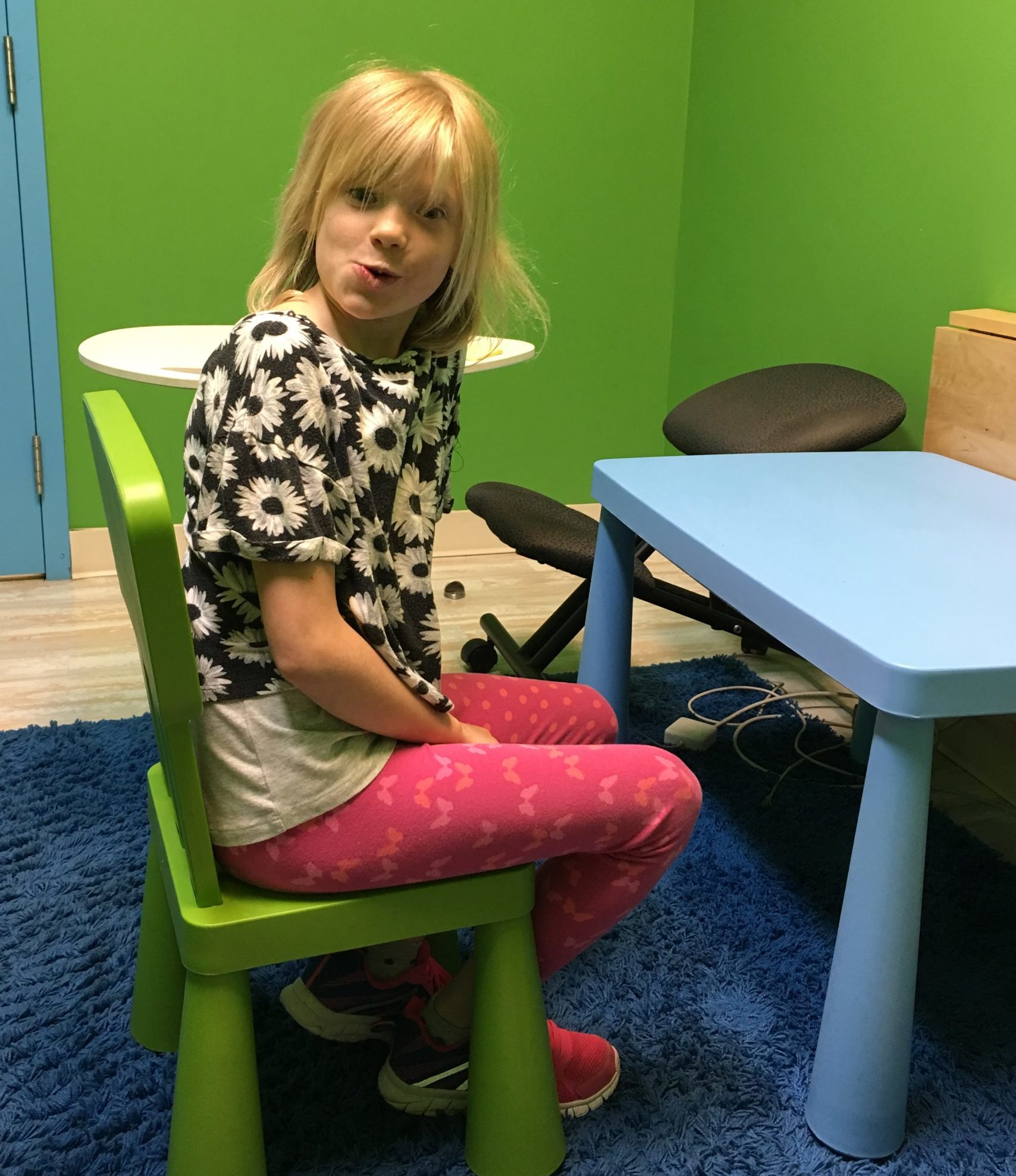
add a comment
+ show comments